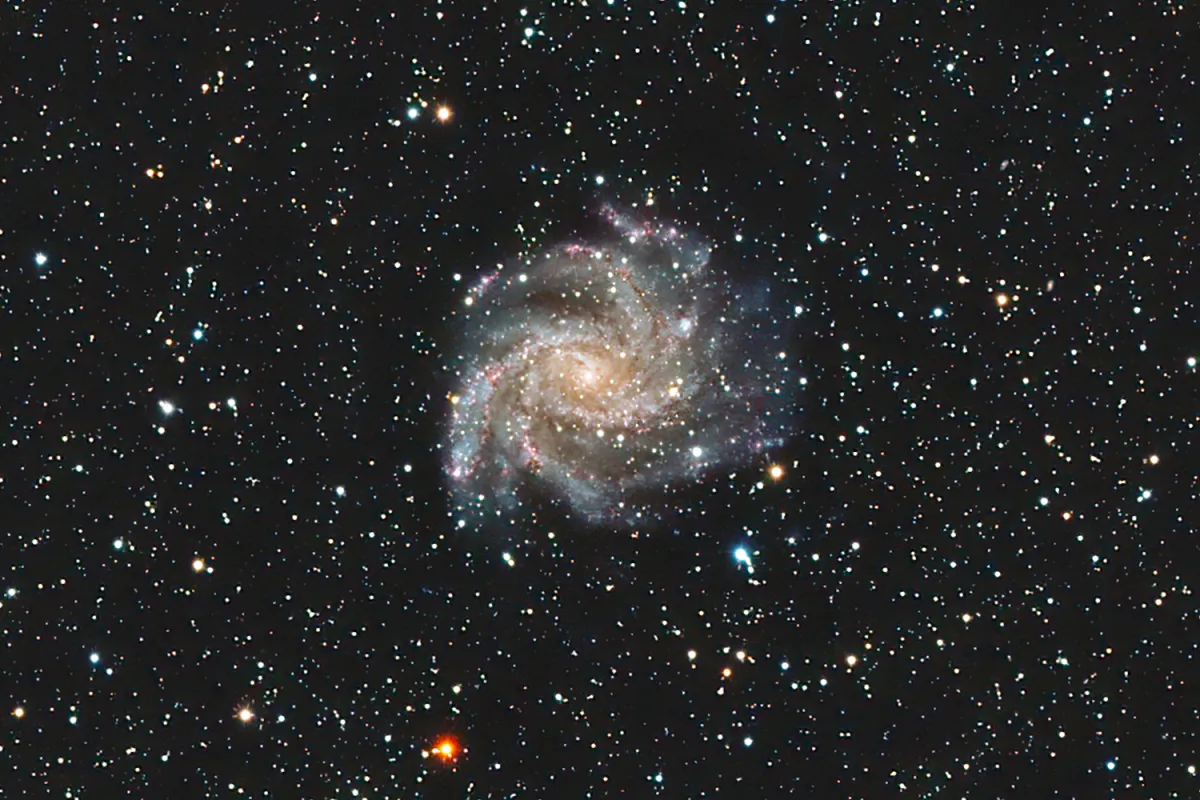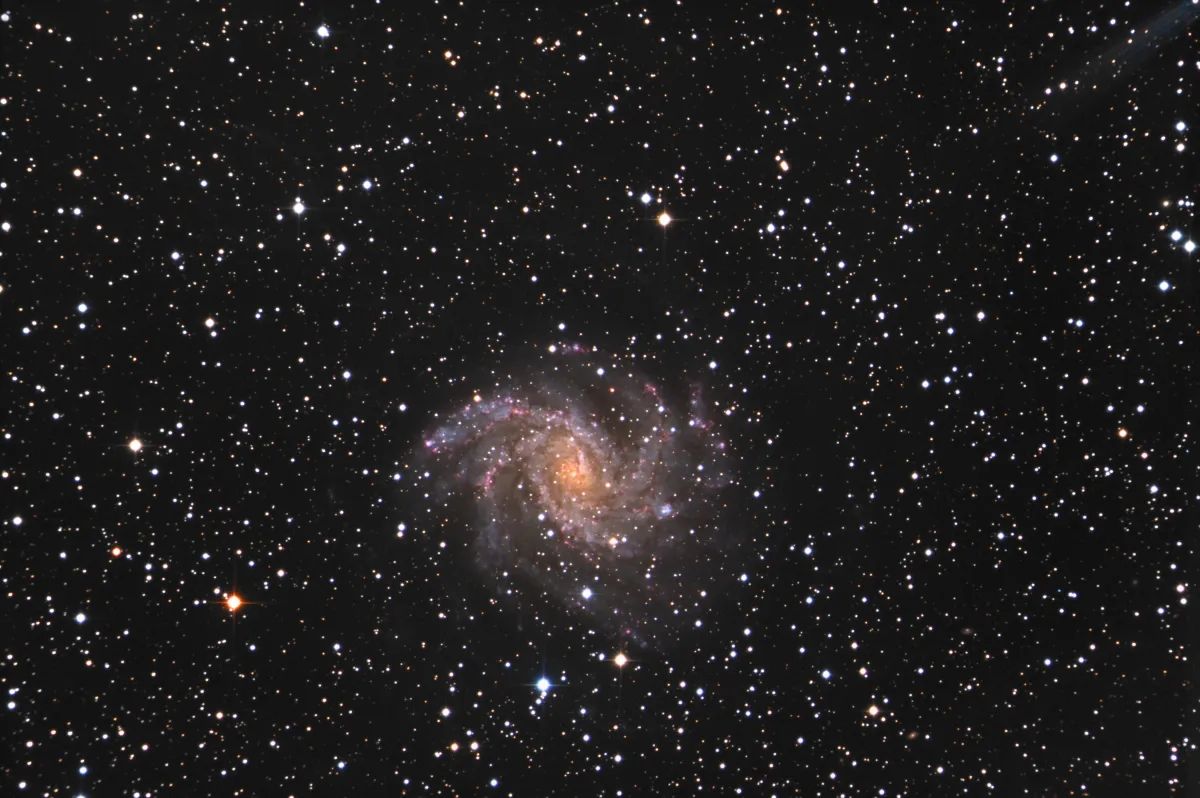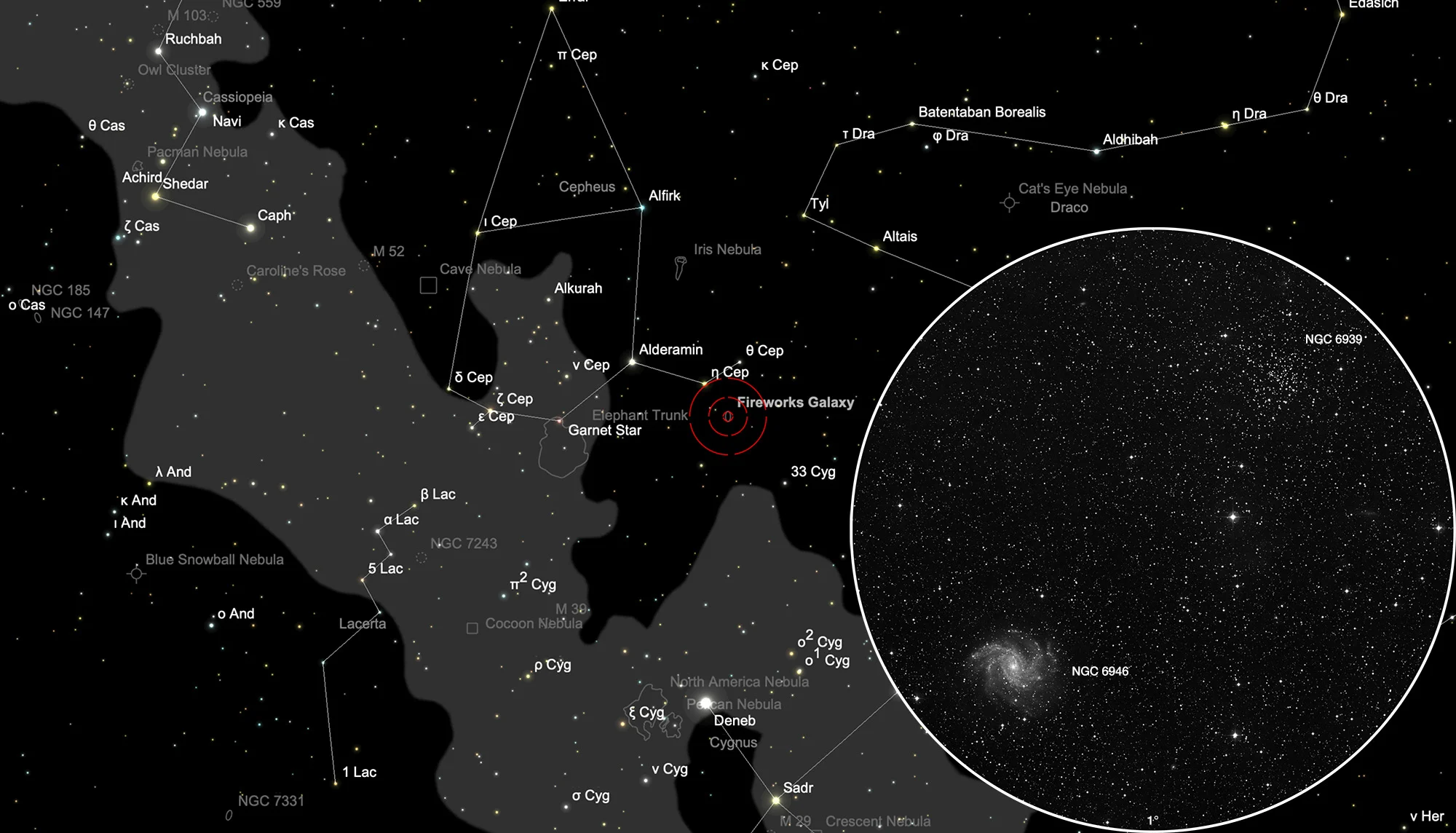Fireworks Galaxy NGC 6946 & Cluster NGC 6939


History
The open star cluster NGC 6939 was discovered on 9 September 1798 by William Herschel. The star cluster has an apparent diameter of about 10 arc minutes and is of the Trumpler type I1m, which means the following: I = The star cluster stands out from the surrounding stars and shows a clear central concentration. 1 = Most of the stars in the cluster are about the same magnitude. m = medium star richness (50-100 stars). Measured distances are in the range of 1800 pc to 1870 pc (about 6000 light-years) and it is moving in our direction at a speed of 19 km/s. [145, 196]
Just 38 arc minutes to the southeast is the beautiful spiral galaxy NGC 6946. It was discovered by William Herschel that same night. At that time it was still believed that these "spiral nebulae" were located in our galaxy and could represent planetary systems in the making. [196]
In Halton Arp's 1966 Atlas of Peculiar Galaxies, NGC 6946 is listed as Arp 29 for an example of a galaxy with an enlarged arm (Arp 25...30). [199]
Physical Properties
NGC 6946 is of the morphological type SAB(rs)cd and is located at a distance of 5.5 Mpc (about 18 million light-years) using the T-RGB (Tip of the Red Giant Branch) method. Spectroscopically measured speeds range from 31 km/s to 80 km/s. Distances determined from this range from 4.1 Mpc to 6.7 Mpc. The galaxy lies roughly in the plane of our Milky Way and is obscured by dust in our galaxy. Short-wave radiation is partially absorbed, which is why the galaxy appears reddened. From there, our Milky Way would appear as an edge-on galaxy. NGC 6946 is a Seyfert 2 galaxy with a bright core and an active rate of star formation, and has a supernovae rate about five times higher per century than our own galaxy. This makes it a «Starburst» galaxy. [145, 196]
| Name | RA | Dec | Type | bMag | vMag | B-V | SB | Dim | PA | z | D(z) | MD | Dreyer Description | Identification, Remarks |
|---|---|---|---|---|---|---|---|---|---|---|---|---|---|---|
| NGC 6939 | 20 31 30.0 | +60 39 42 | OCL (I1m) | 7.8 | 10 | 1.185 | Cl, pL, eRi, pCM, st 11…16 | WH VI 42; h 2083; GC 4590; OCL 217 | ||||||
| NGC 6946 | 20 34 52.1 | +60 09 12 | Gx (SBc) | 9.6 | 8.8 | 0.8 | 13.8 | 11.5 × 9.8 | 57 | 0.000133 | 0.56 | 5.960 | vF, vL, vg, vsbM, rr | WH IV 76; h 2084; GC 4594; UGC 11597; MCG 10-29-6; CGCG 304-6; Arp 29; IRAS 20338+5958 |
Finder Chart
The unequal pair can be found in the constellation Cepheus, approximately on the line connecting the two stars η Cephei (3.4 mag) and 33 Cygni (4.3 mag), so that the outermost 4° Telrad circle lies on the star η Cephei. Just 2.5° east of the galaxy NGC 6945 lies the dark nebula LDN 1082. On 30 July it is in opposition to the Sun and crosses the meridian at local midnight. The constellation is circumpolar, but it is highest in the sky in the months of April to December.
Visual Observation
350 mm aperture: The open star cluster NGC 6939 can be easily resolved into individual stars. Despite its relatively small size, it is still quite spacious, in any case it fits almost seamlessly into the Milky Way. The galaxy NGC 6946 can be found not far from the above star cluster. The search is extremely easy and convenient with the help of NGC 6939. The faint spiral arms are still clearly visible in the galaxy itself. — 14" PWO-Dobson, F:4.6 / TV-Nagler 13mm, 123x, 0.67°, Eduard von Bergen
